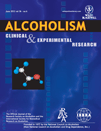Global Actions in Focus
Global actions drink driving initiative: vietnam
 As part of Phase Two of the Global Actions on Harmful Drinking Drink Driving Initiative work plan, two site surveys were completed on June 13 and 15, 2013 in Ho Chi Minh City and Long An Province, Vietnam. Working in conjunction with the Provincial Traffic Safety Council (TSC) executive office, members of the provincial traffic police department, youth unions, the Department of Health, and the Department of Transport, Global Actions addressed key issues concerning road safety and drink driving.
As part of Phase Two of the Global Actions on Harmful Drinking Drink Driving Initiative work plan, two site surveys were completed on June 13 and 15, 2013 in Ho Chi Minh City and Long An Province, Vietnam. Working in conjunction with the Provincial Traffic Safety Council (TSC) executive office, members of the provincial traffic police department, youth unions, the Department of Health, and the Department of Transport, Global Actions addressed key issues concerning road safety and drink driving.
Issues included:
· The current traffic safety situation in the provinces and cities
· The drink driving situation and initiative measures and activities
· Participation from industry companies
· Leadership commitment to improving the drink driving initiative
· Participation by traffic police and health officials
· Challenges and successes during the recent drink driving initiative
 Currently, the Global Actions Drink Driving Initiative in Vietnam has completed site surveys for four provinces and cities, including Thanh Hoan and Nghe An provinces in May 2013. Toward the end of June 2013, initiative leaders will meet with members from the National Transportation Safety Council to discuss implementing the Drink Driving Initiative in two more provinces in Vietnam. In July 2013, the first capacity building project will also be conducted.
Currently, the Global Actions Drink Driving Initiative in Vietnam has completed site surveys for four provinces and cities, including Thanh Hoan and Nghe An provinces in May 2013. Toward the end of June 2013, initiative leaders will meet with members from the National Transportation Safety Council to discuss implementing the Drink Driving Initiative in two more provinces in Vietnam. In July 2013, the first capacity building project will also be conducted.
Key Recent Milestones
· USA: CEOs from many of the signatory companies of the Beer, Wine and Spirits Producers’ Commitments to Reduce Harmful Drinking met in New York the week of June 17, 2013. In a discussion chaired by Heineken CEO Jean-François van Boxmeer, the CEOs reviewed progress made to date on the implementation of the Commitments and addressed how to best support action moving forward in the markets they serve around the world.
What's Happening Next
· China: On July 4, 2013, the Global Actions on Harmful Drinking Drink Driving Initiative Phase Two will be launched in Nanjing. The event is organized by the Nanjing Bureau of Traffic Management, the Jiangsu Center for Disease Control and Prevention, and ICAP. On July 5, the Drink Driving Initiative Phase Two, hosted by the Xi’an Institute for Health Education and ICAP, will hold a launch event in Xi’an. Representatives from ICAP, the Chinese Center for Disease Control and Prevention, industry members, local government agencies, media, and other stakeholders are expected to attend the events.


















